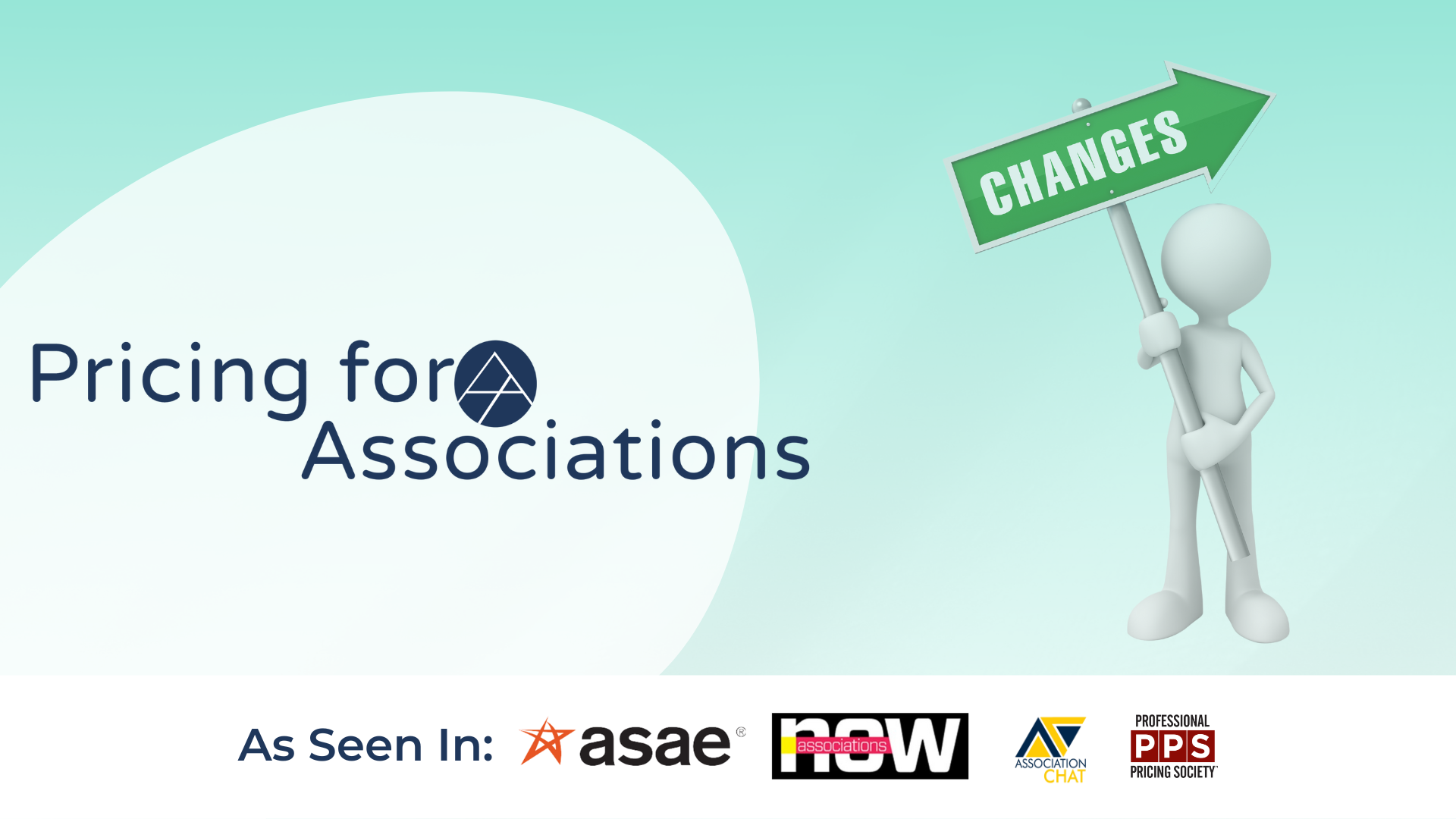Navigating Change: Best Practices for Association Pricing Success
In the ever-evolving landscape of associations, change is an inevitable part of growth. Whether due to rising operational costs, new features, or enhanced services, price adjustments often become necessary. However, the way in which these price increases and value adjustments are communicated can make all the difference in maintaining trust and satisfaction among members. Dr. Michael Tatonetti, a Certified Association Executive and Certified Pricing Professional, offers expert insights into best practices for communicating these changes effectively.
Key Strategies for Communicating Price Changes
1. Transparency is Essential
At the heart of effective communication is transparency. When it comes to price increases, members need to understand the "why" behind the changes. Whether the increase is necessary to maintain service quality, enhance offerings, or secure the financial stability of the association, being open and upfront about the reasons fosters trust.
Dr. Tatonetti emphasizes that members are more likely to accept price adjustments when they feel informed and understand the underlying rationale. For example, explaining how the additional funds will support the introduction of new features or the expansion of services can help members see the value in the change.
2. Provide Advance Notice
One of the most respectful and member-friendly practices is to give plenty of notice before implementing any price changes. Offering advance notice—ideally, well ahead of the pricing shift—gives members the time they need to adjust their budgets, make necessary changes, and prepare for the upcoming costs.
This step demonstrates that the association values its members’ planning processes and wants to help them manage their resources effectively. Advanced notice also signals professionalism and consideration, helping to reduce any negative reactions to the changes.
3. Emphasize Value Enhancement
While price increases can sometimes be met with resistance, emphasizing the enhanced value that comes with the change can make the transition easier. It’s important to communicate how the price increase will directly translate into improvements in services, products, or benefits.
For instance, if a membership fee increase is tied to the introduction of new online resources, educational content, or member support services, clearly explaining these enhancements helps members see the connection between the price adjustment and the additional value they will receive. This approach not only justifies the increase but also reinforces the value proposition.
4. Utilize Multiple Communication Channels
To ensure that the message reaches all members, it’s important to use a variety of communication channels. Different members may have different preferences for how they receive information, so leveraging multiple platforms—such as email, newsletters, social media, webinars, and association websites—can help ensure that the message is heard loud and clear.
By diversifying communication methods, associations can cater to various member needs and preferences, thus increasing the likelihood that the information will be well-received.
5. Develop Comprehensive FAQs
Anticipating the questions and concerns that members might have about the pricing changes is key to addressing uncertainty upfront. Developing a comprehensive FAQ (Frequently Asked Questions) section is an effective way to proactively respond to potential inquiries. A well-thought-out FAQ can address common concerns and provide additional context for the changes.
Dr. Tatonetti notes that providing clear and detailed answers to member concerns shows that the association is well-prepared and willing to address any issues head-on.
6. Share Success Stories
Real-life testimonials and success stories can be powerful tools in illustrating the positive impact of previous price increases or value adjustments. Sharing stories from members who have benefited from enhanced services or additional features helps personalize the changes, making them more relatable and understandable.
These examples show that, despite the price increase, the overall member experience has improved, helping to build confidence in the association’s decision-making.
7. Offer Support Channels
Providing members with a direct line of communication—whether through a dedicated email address, live Q&A sessions, or customer support—helps ease concerns. These support channels give members an opportunity to express their thoughts and receive clarification about the changes.
Ensuring that members feel heard and supported through the transition fosters a sense of community and demonstrates that the association is committed to addressing their needs and concerns.
8. Engage Leadership in Communication
When association leaders, such as the Executive Director or Board Chair, are involved in communicating pricing changes, it underscores the importance of the decision and reinforces the transparency of the process. Leadership involvement adds credibility to the message and can help members feel more confident in the changes.
Dr. Tatonetti highlights that leadership engagement is essential for making the communication feel genuine and authentic. It shows that the decision is supported by the highest levels of the organization and is in line with the association’s long-term goals.
9. Seek Member Feedback
Finally, inviting member feedback after the price changes are announced is a valuable practice. Not only does this demonstrate that the association values its members’ input, but it also provides an opportunity to fine-tune the changes based on constructive feedback. Regularly soliciting input through surveys, focus groups, or one-on-one conversations helps build a continuous dialogue with members, further strengthening trust and loyalty.
Expert Insights
Dr. Michael Tatonetti stresses that the process of communicating price increases is not just about disseminating information—it’s about maintaining the trust and loyalty of members. Members are more likely to accept price adjustments when they feel informed, respected, and understood. By employing these best practices—such as transparent communication, advance notice, and a focus on value—associations can foster a positive environment during times of change.
Conclusion
Successfully navigating price increases and value adjustments within an association requires a strategic and thoughtful approach to communication. By prioritizing transparency, providing ample notice, emphasizing value enhancements, and utilizing multiple communication channels, associations can ensure a smooth transition for their members. Additionally, engaging leadership, offering support, and seeking feedback helps create a collaborative environment that maintains trust and fosters long-term loyalty.
By adopting these best practices, associations can navigate the challenges of price adjustments with confidence, ensuring that members remain engaged, satisfied, and aligned with the association’s goals.


